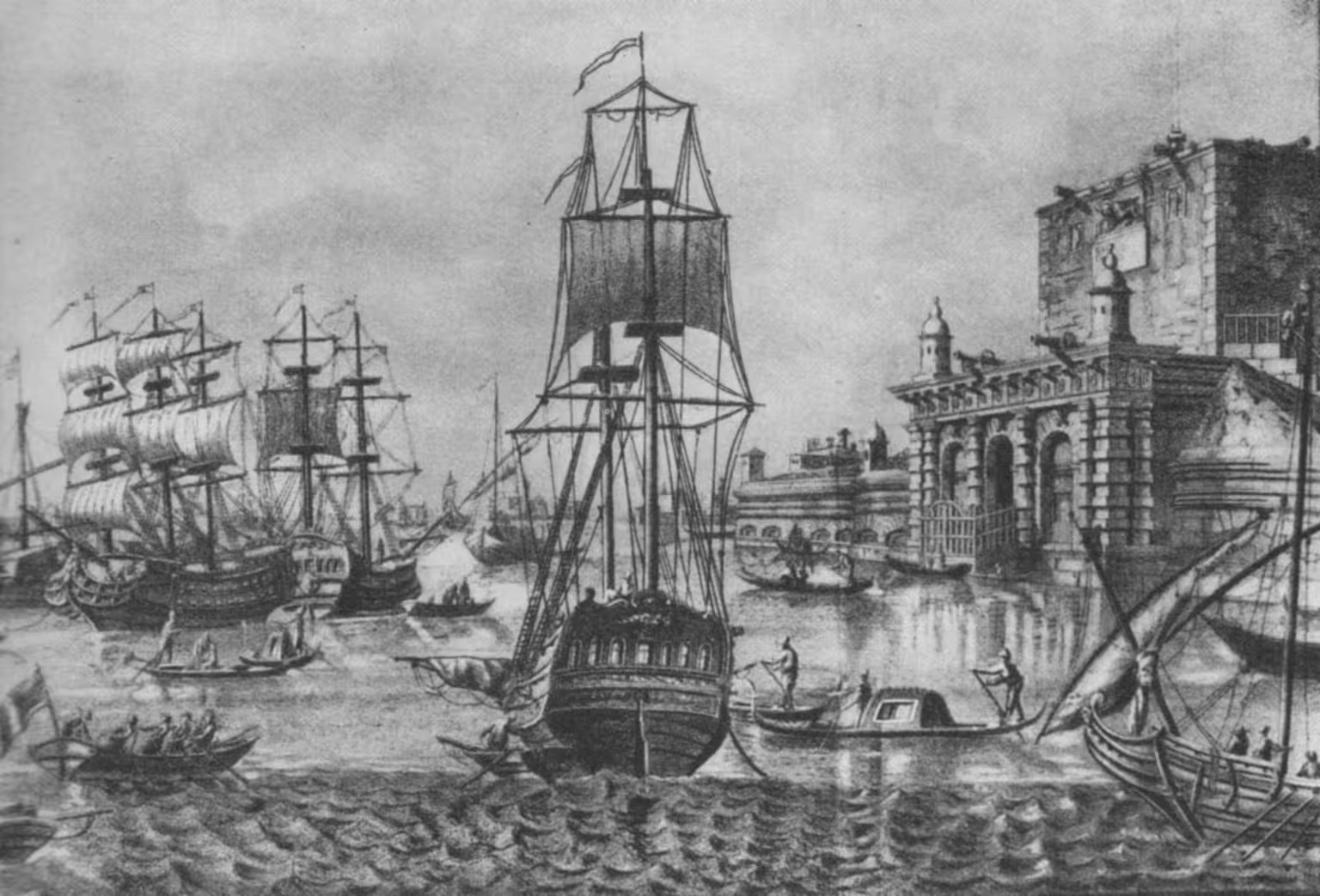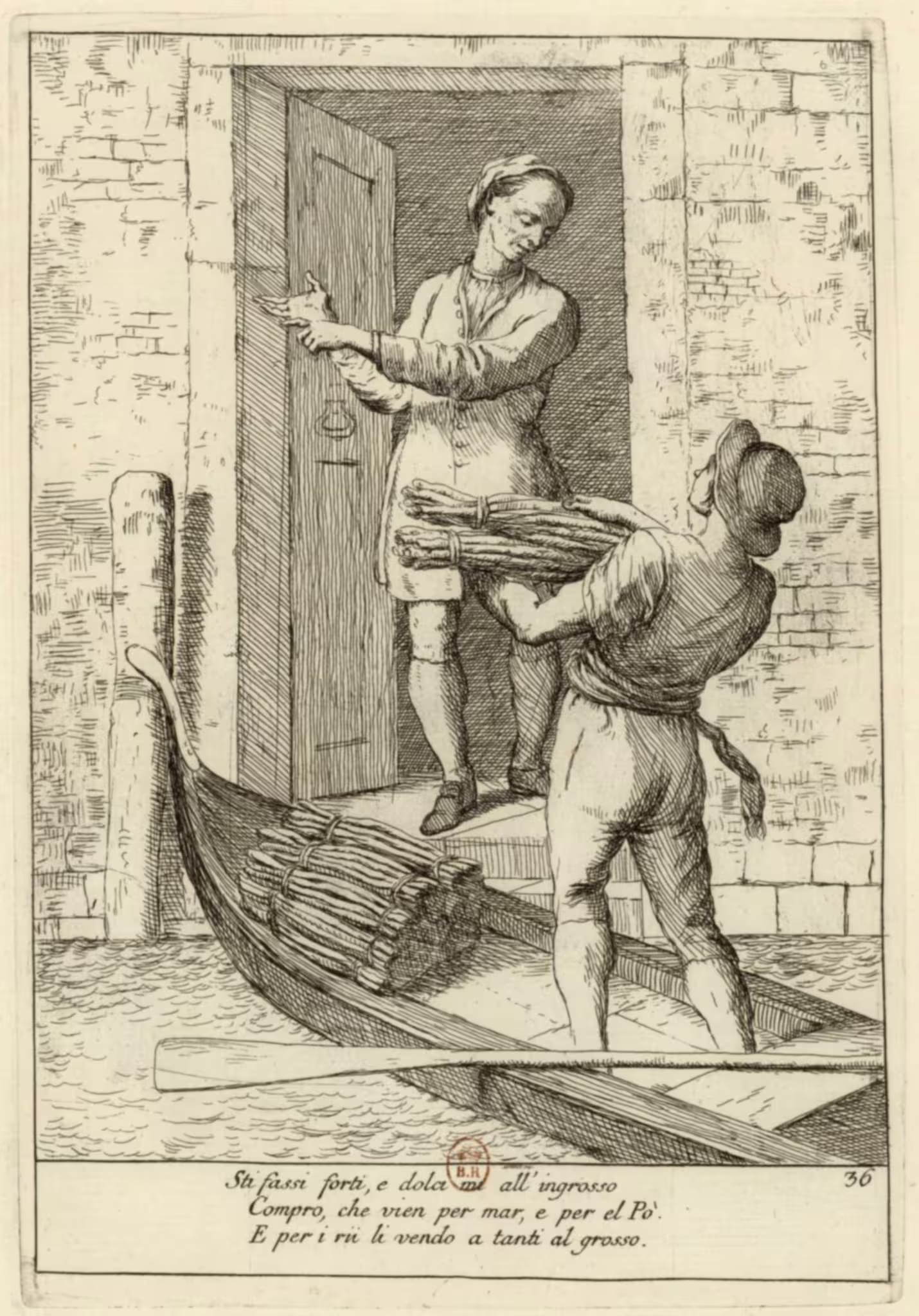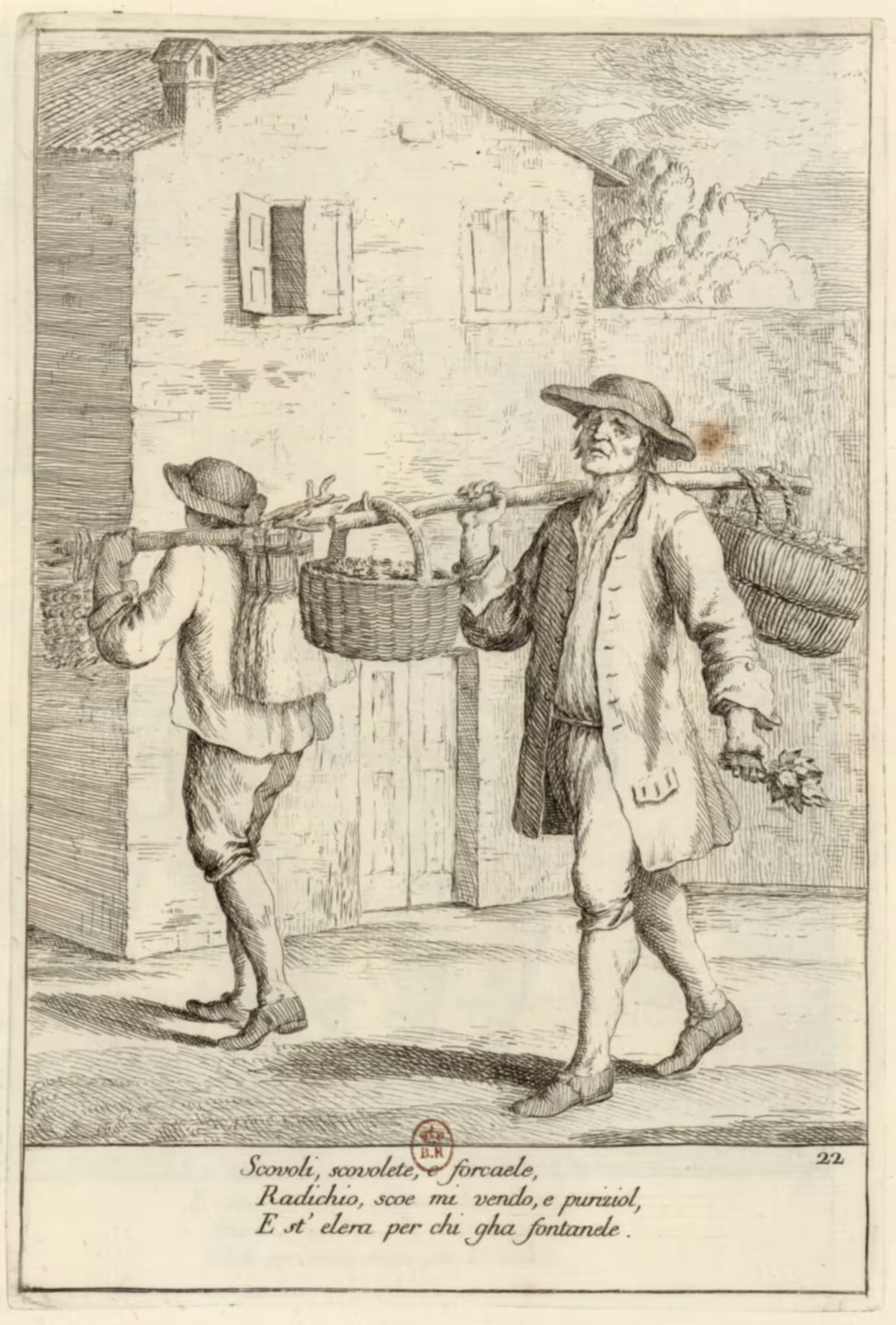Domenico Pizzamano never expected to end up in prison.
A nobleman should not be in prison, unless a traitor to the Republic. It was simply not the order of things.
Venetian Stories
This post is an issue of our newsletter — Venetian Stories — which goes out every few weeks, to keep in touch and share stories and titbits from and about Venice and its history.
And he was no traitor. He had done his duty to the Republic and to his class, ever since he had embarked on a Venetian galley at the age of eleven. Last year, when the Superintendent of the Lagoon had asked for volunteers in the defence of the city against Napoleon, he had stood up, along with little more than a dozen other noblemen.
Given the command of the fortress of Sant’Andrea, he had executed his orders meticulously.
When the ships flying the French flag had tried to enter the lagoon after dark, against the orders of the Council, he had ordered warning shots fired. One ship didn’t turn around. He had sent a galley to repel them, with words rather than with guns. Instead, they had crashed into his ship and his men.
They caused the fight, for which they’d paid dearly. He was proud of his men, who had fought valiantly.
That French commander should have turned around like the others did. He certainly hadn’t ordered the death of the Frenchman.
But now the Republic was no more. The doge had abdicated. The Jacobins had taken over. Napoleon had won.
What would be of him now?
The nobleman Domenico Pizzamano played an important role in the final weeks of the Venetian Republic.
He wasn’t a central person as such, but a very significant event happened on his watch.
Who was Domenico Pizzameno
The Pizzamano family was part of the Venetian nobility since the Locking of the Council in 1297. The family was well-off, but not very prominent within the Venetian aristocracy.
Domenico Pizzamano was born in 1748 on the island of Corfu, where his father Nicolò was provveditore e capitano — the military commander on the island. His mother was from the important Diedo family in Venice.
At the age of eleven, he went to serve on a Venetian war galley, commanded by his brother. This was the normal age for starting an apprenticeship, and being nobile in galea — a nobleman commanding a war galley — was a craft to be learned.

At the age of twenty, he entered the Maggior Consiglio — five years early — through the Barbaréla.
In 1775, he was provveditore in Šibenik in Dalmatia, and in 1783 he was provveditore e capitano of Corfu like his father had been. During the 1780s and 1790s, he held several administrative and military posts in Venice.
He married Marina Marin in 1783. She was from a prominent aristocratic family, who brought him a substantial dowry.
All in all, a quite respectable career for a mid-level Venetian nobleman. He had experience from the navy, and from both colonial and domestic administration.
The events of 1796
In the summer of 1796, Napoleon had been encroaching for some time on Venetian territory, even though Venice was neutral in the ongoing war between France and Austria.
The Republic of Venice started preparing for the eventuality of having to defend the Dogado, and maybe even the city of Venice, against the French.
To avoid unpleasant surprises, they enacted a ban on foreign ships in the lagoon. The French were formally informed of this decision.

The Provveditore alle lagune ed ai lidi — the Superintendent of the lagoons and the Lidos — called for volunteers from the nobility for the preparations of the defence of the Dominante. Only eighteen noblemen — among these Domenico Pizzamano — answered the call.
Pizzamano was given the command of the fortress of Sant’Andrea and the surrounding lagoon area. Besides the fortress and its guns, he also had command over four small war galleys — lightly armed, rowed war ships, which could there operate independent of wind and current — of which only two were fully operational.
The Liberateur d’Italie
Napoleon had continued his campaigns against the Austrians, and in early 1797 he had control over Lombardy, the two formerly independent duchies of Parma and of Modena, and parts of the Papal state.
In March, he instigated insurrections against Venetian rule in Bergamo and Brescia, propping up ‘independent’ republics in both cities.
Venice, having no forces capable of confronting Napoleon, tried desperately to de-escalate the conflict through diplomacy, but Napoleon kept escalating it, by repeated provocations and ultimatums.
In the Papal state, Napoleon had gained control over Ancona, which gave him a harbour on the Adriatic Sea. Ships under French flag, or flying no flag at all, roamed the coast off the Venetian lagoon, and kept the Venetian fear of a naval invasion alive.
In mid-April, a flotilla of three ships under French banner set out from Ancona towards Venice. The larger ship — the Liberateur d’Italie, the name itself a provocation — was commanded by Jean Baptiste Laugier.
A dark and windy night
After dark on April 20th, on a windy and rainy evening, the ships approached the bocca di porto at San Nicolò, which leads to the fortress of Sant’Andrea.
The Liberateur d’Italie entered the lagoon first, and moved quickly towards the fortress of Sant’Andrea, as both winds and current were in its favour.
From this point onwards, the eyewitness accounts differ greatly. Everything happened in the dark, while wind and current made all manoeuvres difficult, both to perform and to observe.
Apparently, the Liberateur fired a series of gunshots as a salute, to signal their arrival. However, in the dark it was perceived as an attack because everybody expected a French attack.
When a second ship was spotted behind the Liberateur, Pizzamano ordered warning shots fired. The two smaller ships immediately turned back and weren’t seen again.
The Liberateur d’Italie, however, already close and with the wind in the back, continued forward towards the fortress and Venice.
Two galleys set out to deliver the message that ships under foreign banner were not allowed to enter the lagoon. A shallop from one of the galleys approached the Liberateur, and shouted the order, but received an arrogant retort from Laugier that he couldn’t stop.
He then apparently changed his mind, and ordered the sails and the anchor lowered. Somebody fired a gun, and the Dalmatian soldiers and sailors on the Venetian galleys started shooting.
Laugier gave a counter-order, for the anchor to be raised, and the sails set again, but in the chaos most of the crew had sought shelter under deck and the Liberateur drifted out of control towards the fortress on the Lido.
Seeing the French ship approaching, the troops on the Lido feared an attack. They started shooting too. A cannon shot missed the Liberateur, whistled over the Sant’Andrea fortress and hit a house on the Vignole islands.
The soldiers at Sant’Andrea thought it came from the Liberateur, and fired back.
Soldiers from the two galleys boarded the Liberateur.
The Venetian commanders had difficulty getting their men under control, and when the fighting finally subsided, five sailors of the Liberateur were dead, and thirty-nine taken prisoners, of which eight were wounded.
Laugier lay dead on the deck of the Liberateur, hit by a musket shot.
The Venetians had eight wounded, of whom one later died.
The aftermath
After the battle, nobody really had any idea about what had happened. Pizzamano wrote a report to his superior, but he too presented a confused picture.
In any case, the Senate met the following day, and showered praise on Pizzamano for his resolute and determined defence of the city, and awarded all the soldiers half a month extra pay.
The mood and the tone changed, however, as the French reaction arrived.
The episode was precisely what Napoleon was after. It was the perfect pretext to escalate the conflict even further.
The French ambassador left Venice in protest, and Napoleon sent a furious dispatch, demanding the immediate arrest of Pizzamano, the arrest of the Inquisitori di stato, the return of the ship and the freeing of the prisoners.
On May 4th, the Maggior Consiglio met, and to placate Napoleon’s fury, basically gave in to all his demands, including the arrest of Pizzamano.
Pizzamano, who had been praised for his actions, was arrested the same day. He was taken to the island of San Michele.
The investigation
The Avogadori di Comùn — the public prosecution service of the Venetian state — initiated the investigation. However, after a few interrogations, the investigation stalled.
On May 12th, 1797, the Republic of Venice effectively surrendered to Napoleon.
The Republic of Venice was not more, and control passed to a provisional Jacobin government, while French troops occupied the city.
All the offices of the former state ceased to function, including the Avogadori di Comùn. Whatever legal base there had been for his arrest had evaporated, but the new government wasn’t going to let Pizzamano go. A new office was soon established, and the investigation resumed.
The three Inquisitori di stato — the hated and feared state inquisitors who were the repressive arm of the Venetian republic — had been arrested with Pizzamano, but they were soon released.
He wasn’t.
Saved by an accident
Against all odds, Pizzamano got out of prison.
Despite Napoleon’s fury at the killing of Laugier, he eventually pardoned Pizzamano.
Joséphine de Beauharnais — Napoleon’s wife from 1796 to 1810 — had reached him in Italy after the surrender of Venice. Travelling near Treviso in September 1797, she had an accident with her carriage.
The Bishop of Treviso, Bernardino Marin, hosted her during this unplanned sojourn in the city, and Napoleon joined them as soon as he heard about the incident.
The subsequent debt of gratitude saved Domenico Pizzamano.
Bernardino Marin was a relative of Pizzamano, through his wife. He interceded with Napoleon, who shortly after, following a formal application, granted Pizzamano clemency.
He was released from prison in October.
Domenico Pizzamano died in 1817 of natural courses, in his home in Venice. The events of April 1797 had no further consequences for him.
The family line was extinguished in 1887 with the death of his youngest daughter. His only son had died childless in 1820.
The defenders and the fortress
The fight at the fortress of Sant’Andrea on April 20th, 1797, was the only armed defence of the Republic of Venice.
Most of the soldiers and sailors who fought to defend Venice on the Liberateur were not, however, Venetians. They were Dalmatians.
The fortress of Sant’Andrea — the scene of these historic events and also a unique example of medieval and Renaissance military engineering — is abandoned and overgrown.
Related articles
- The fortress of Sant’Andrea
- Chronology of the Fortress of Sant’Andrea
- The Fall of Venice
- A Chronology of the Fall of Venice
- State institutions of the Republic of Venice




